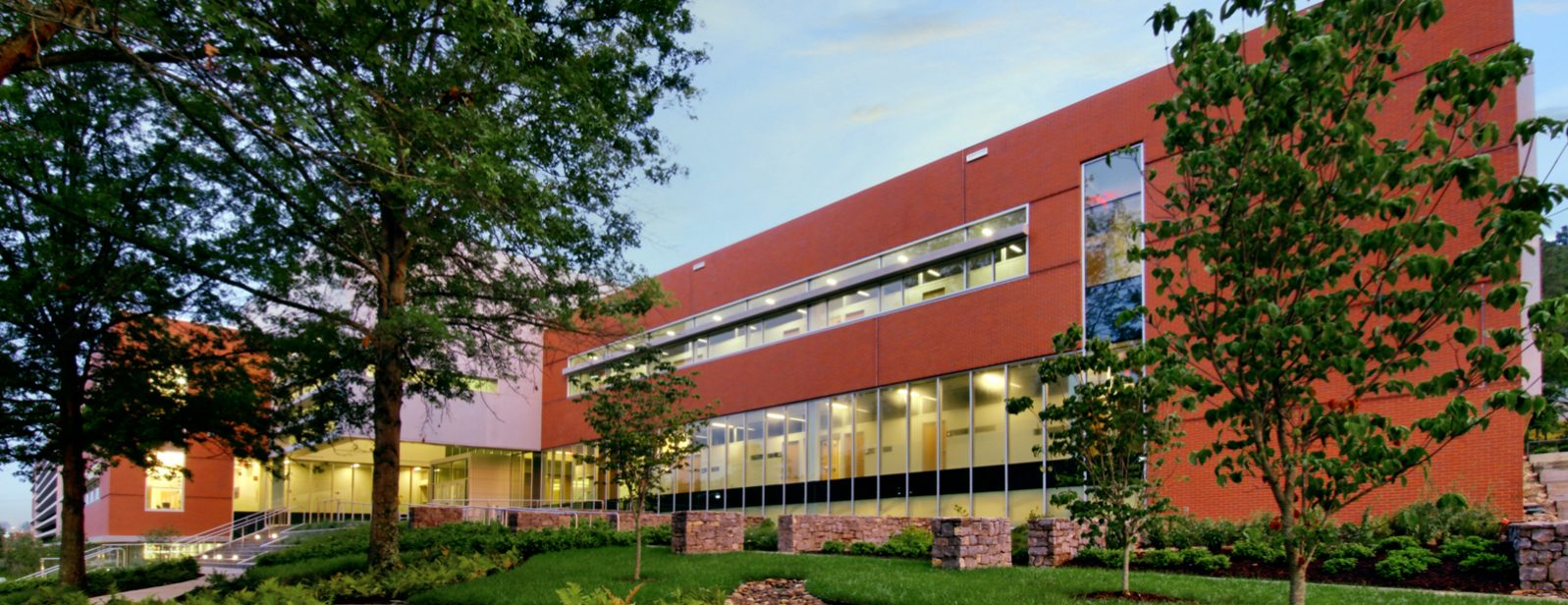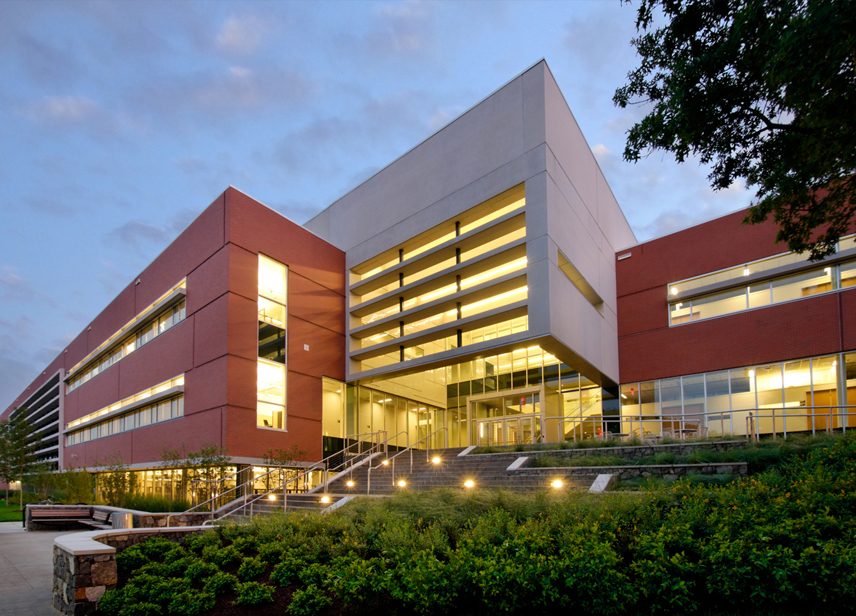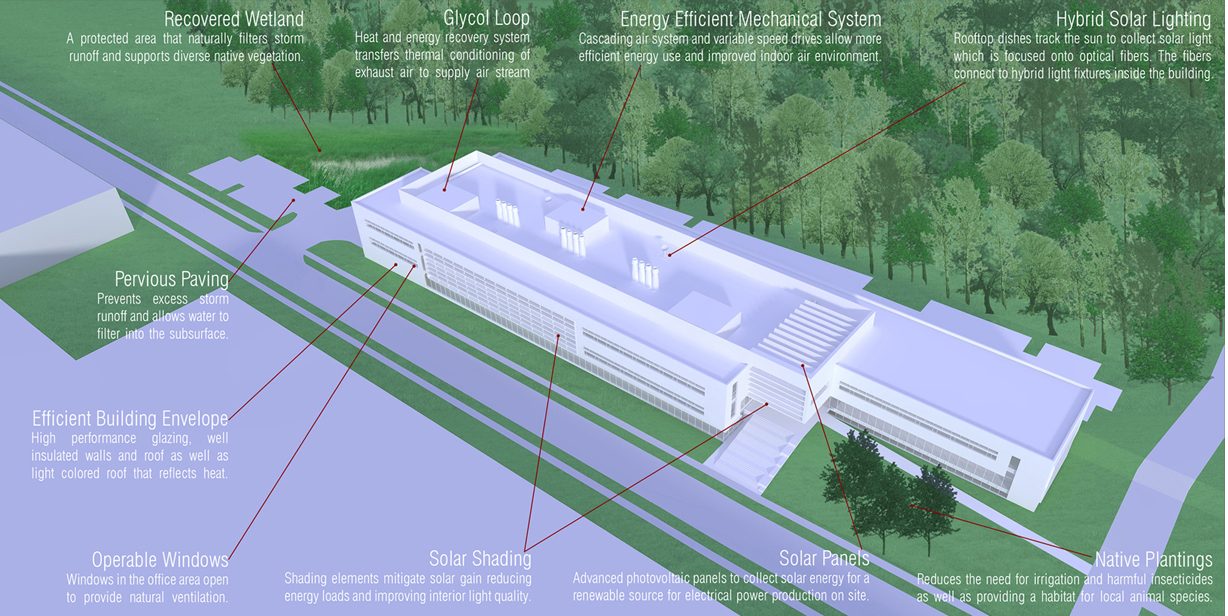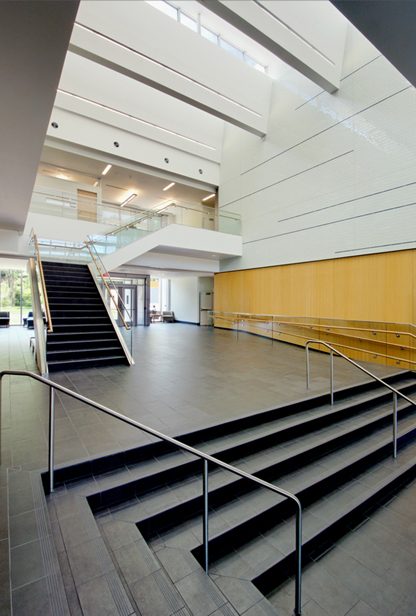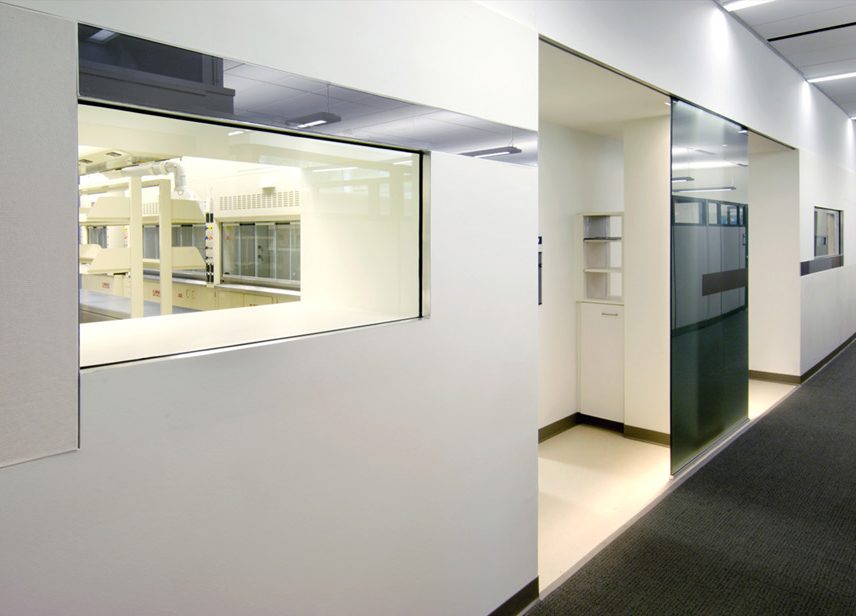Sophisticated Sustainability Complements Complex Science
An integral part of Oak Ridge National Library’s (ORNL) modernization initiative, the three-story Chemical and Materials Science Building will host research into chemical transformations at interfaces, synthesis science for materials by design, chemical and isotropic mass spectrometry, separation science, and laser spectroscopy. A significant component of the work in this facility will involve nano-science operations, requiring extensive HEPA filtration in exhaust systems.
To facilitate accommodation of future research initiatives, labs are flexibly designed and arranged around a central service corridor. Infrastructure includes innovative planning for flexible control zones to accommodate maximized chemical loading, as well as vibration mitigation.
Based on the DOE’s Guiding Principles of High Performance and Sustainable Buildings, and designed to achieve LEED Gold v2.2 certification, the new building features a photovoltaic array, light shelves, operable windows, and hybrid solar lighting – a technology developed at ORNL. Externally, the planting of native plants reduces irrigation and a recovered wetland naturally filters storm runoff. The air handling system utilizes a glycol loop heat and energy recovery system to precondition outside air required for the laboratory environment. Overall, the building will use 30 percent less energy annually than a comparable-sized laboratory facility.
CannonDesign has successfully delivered a high-performance facility that exceeds all our expectations. The combination of advanced sustainable features and the high degree of flexible functionality enables us to undertake the most complex science more efficiently than ever before.

